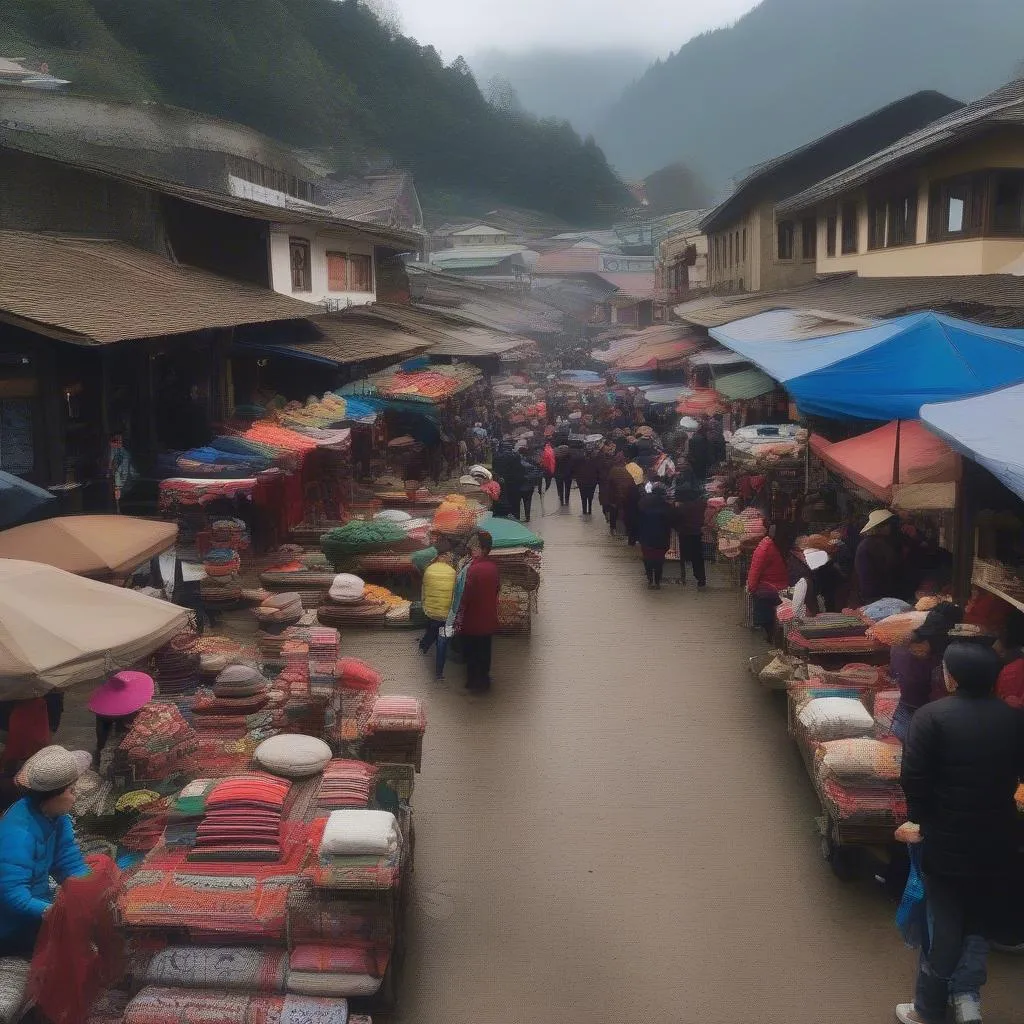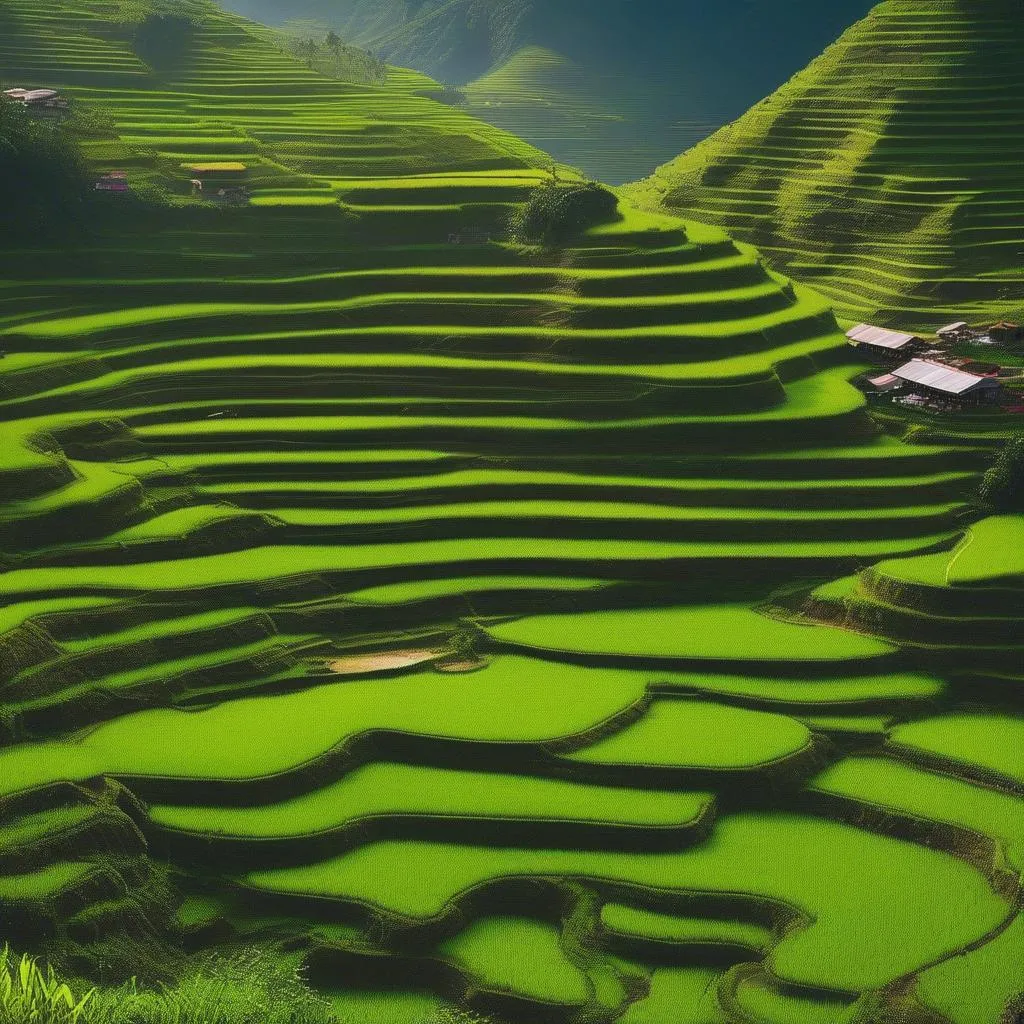Have you ever dreamt of stepping into a postcard, where emerald rice terraces cascade down hillsides, shrouded in mist and crowned by majestic mountains? That’s Sapa for you, a charming town nestled in the Hoang Lien Son mountain range of northern Vietnam. A Sapa 5 days 4 nights itinerary is the perfect amount of time to immerse yourself in the breathtaking landscapes, vibrant culture, and unparalleled trekking experiences this region offers.
Unveiling Sapa’s Charm: More Than Just a Pretty Picture
Sapa is often described as a feast for the senses, and rightly so. Imagine waking up to the aroma of fresh mountain air, the sun painting the sky with hues of gold and pink, and the sound of birdsong echoing through the valleys.
But Sapa is more than just a visual spectacle. It’s a place where you can trek through lush valleys, interact with the local ethnic minority groups like the Hmong and Red Dao, and discover hidden waterfalls and ancient villages. It’s an experience that will stay with you long after you’ve left.
Your Sapa 5D4N Adventure Unfolds: A Detailed Itinerary
Here’s a possible itinerary to inspire your Sapa journey:
Day 1: Arrival and Acclimatization
- Arrive in Sapa from Hanoi, either by bus or train. The journey itself is an experience, winding through scenic landscapes and offering glimpses into rural Vietnamese life.
- Check into your hotel. Consider choosing accommodation with panoramic views of the valley.
- Spend the afternoon exploring Sapa town. Stroll around Sapa Lake, visit the stone church, and soak in the atmosphere of the local market.
- Enjoy dinner at a local restaurant, savoring authentic Vietnamese cuisine.
Day 2: Trekking to Cat Cat Village and Waterfall
- Embark on a scenic trek to Cat Cat Village, home to the Black Hmong minority group. The trail meanders through terraced rice fields and offers stunning views of the valley.
- Learn about the unique culture and traditions of the Black Hmong people by interacting with the locals and observing their daily life.
- Visit the impressive Cat Cat Waterfall, a popular spot for photography and a refreshing dip in the cool mountain water.
Day 3: Conquering Fansipan Peak (Optional)
- Today, challenge yourself with an unforgettable hike (or cable car ride) to the summit of Fansipan, the “Rooftop of Indochina.”
- The panoramic views from the top are simply breathtaking, stretching over the Hoang Lien Son range and beyond.
- This is an optional activity depending on your fitness level and preference.
Day 4: Discovering Ta Phin Village and its Cultural Gems
- Journey to Ta Phin Village, home to both the Red Dao and Black Hmong communities.
- Engage with the locals and learn about their unique handicrafts, including traditional embroidery and herbal medicine practices.
- Consider getting a relaxing herbal bath, a Red Dao specialty known for its healing properties.
Day 5: Farewell to Sapa
- Enjoy a final breakfast with a view before bidding farewell to this captivating mountain town.
- Depart for Hanoi, carrying with you unforgettable memories and perhaps a longing to return.
 Sapa Market
Sapa Market
Planning Your Sapa Trip: Essential Tips
Budget: Sapa offers a range of options to suit different budgets, from budget-friendly homestays to luxurious resorts.
Best Time to Visit: Spring (March-May) and Autumn (September-November) offer pleasant weather and stunning scenery.
What to Pack: Pack comfortable walking shoes, layers of clothing for varying temperatures, insect repellent, sunscreen, and a raincoat.
Sapa FAQs: Answering Your Burning Questions
Q: How do I get to Sapa?
A: Sapa is accessible from Hanoi by bus (around 5-6 hours) or train (around 8 hours). Overnight sleeper buses and trains are popular options.
Q: Do I need a guide for trekking?
A: While it’s possible to trek independently, hiring a local guide is recommended, especially for longer treks. Guides offer valuable insights into the local culture, traditions, and trails.
Q: What is the best way to experience the local culture?
A: Interact with the locals, visit their villages, learn about their handicrafts, and consider staying in a homestay for a more immersive experience.
Sapa: A Tapestry of Memories Woven with Nature’s Grace
My own Sapa journey was a testament to the transformative power of travel. I vividly remember trekking through the verdant rice terraces, the air thick with the scent of wildflowers, and the sound of the wind whispering through the bamboo forests. I met a Hmong woman named May, who shared stories of her life in the mountains, her words weaving a tapestry of resilience, tradition, and an enduring love for her homeland.
 Sapa Rice Terraces
Sapa Rice Terraces